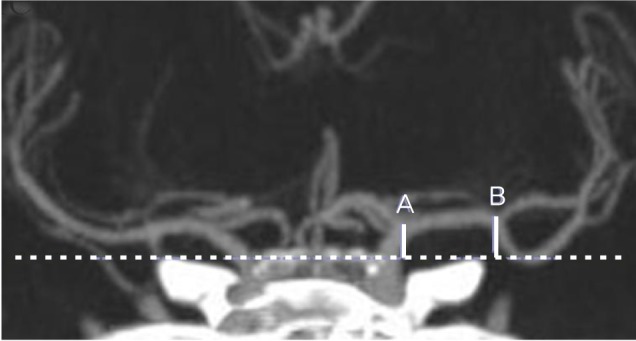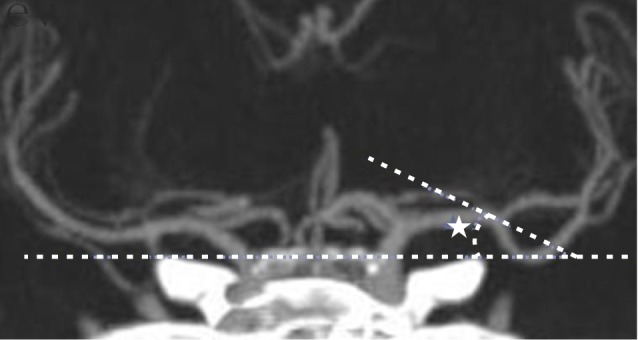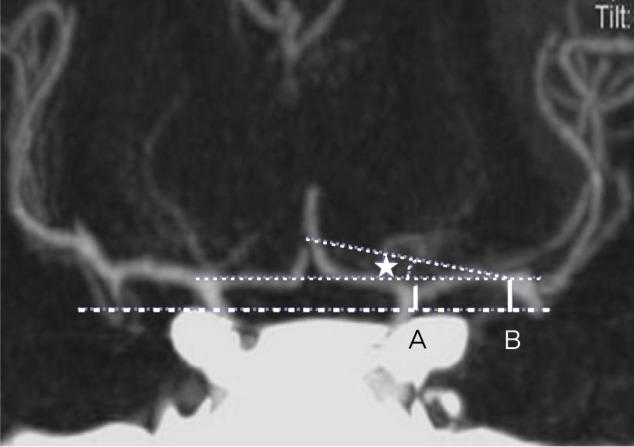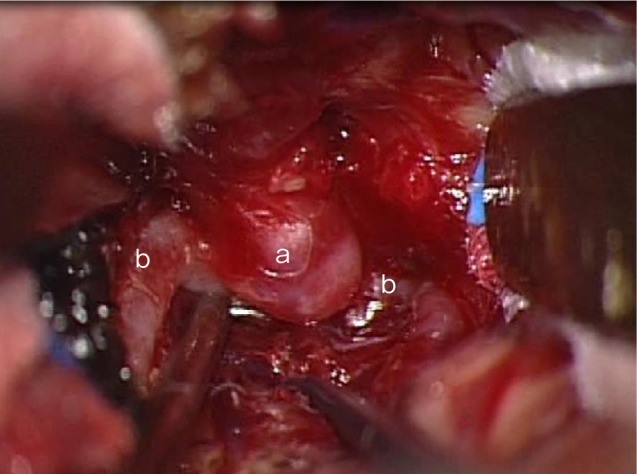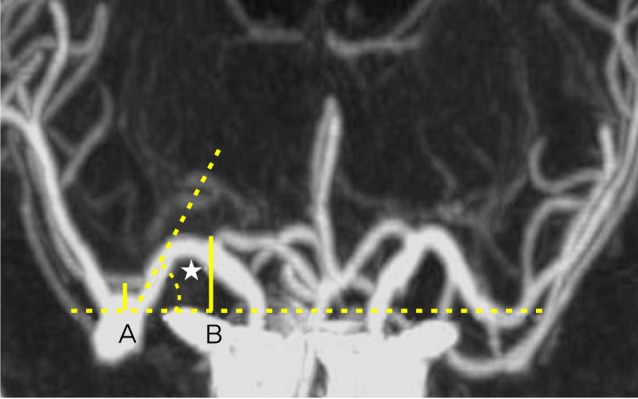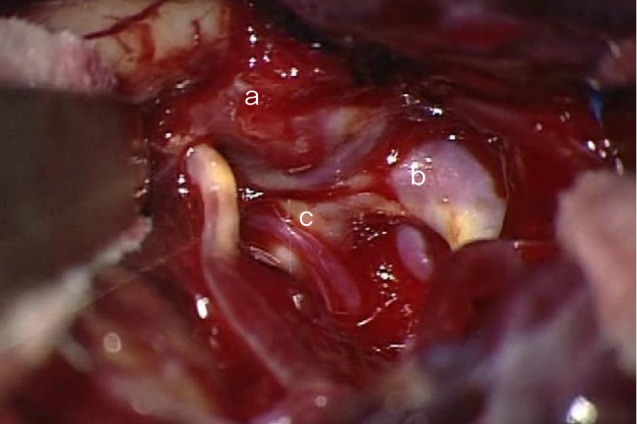J Cerebrovasc Endovasc Neurosurg.
2013 Sep;15(3):164-170. 10.7461/jcen.2013.15.3.164.
Two Indices Affecting the Directions of the Sylvian Fissure Dissection in Middle Cerebral Artery Bifurcation Aneurysms
- Affiliations
-
- 1Department of Neurosurgery, Eulji University Hospital, College of Medicine, Eulji University, Taejon, Korea. neurocsy@eulji.ac.kr
- 2Department of Neurosurgery, Kosin University Hospital, College of Medicine, Kosin University, Busan, Korea.
- KMID: 1491434
- DOI: http://doi.org/10.7461/jcen.2013.15.3.164
Abstract
OBJECTIVE
This study proposes more objective methods for deciding the appropriate direction of the sylvian fissure dissection during surgical clipping in middle cerebral artery (MCA) bifurcation aneurysms.
METHODS
We reviewed data of 36 consecutive patients with MCA bifurcation aneurysms. We measured 2 indices preoperatively on 3-dimensional computed tomography angiography (3D-CTA). Analysis of the calculated data allowed us to select the appropriate direction of sylvian fissure dissection for ease of proximal control of M1. Statistically, Mann-Whitney test was used.
RESULTS
We classified subjects into 2 groups based on the technical level of M1 exposure during surgical clipping. When it was difficult to expose M1, subjects were assigned to Group I, and Group II were subjects in whom M1 exposure was easy. The mean difference between the distances extending from the limbus sphenoidale (LS) line to the internal carotid artery bifurcation and extending from the LS line to the MCA bifurcation was 1.00 +/- 0.42 mm in group I and 4.39 +/- 2.14 mm in group II. The mean M1 angle was 9.36 +/- 3.73degrees in the group I and 34.05 +/- 16.71degrees in the group II (M1 slope gap p < 0.05, M1 angle p < 0.05).
CONCLUSION
We have found an objective method for preoperatively verifying ease of exposure of M1 artery during surgical clipping. Therefore, we suggest use of the preoperative M1 slope gap and M1 angle as indicators in 3D-CTA selecting the direction of sylvian fissure dissection for easy proximal control of M1.
Keyword
MeSH Terms
Figure
Reference
-
1. Ahn JS, Kwun BD. [Pterional, trans-sylvian approach for aneurysm surgery]. Korean J Cerebrovasc Dis. 2000; 9. 2(2):149–153. Korean.2. Dashti R, Hernesniemi J, Niemela M, Rinne J, Porras M, Lehecka M, et al. Microneurosurgical management of middle cerebral artery bifurcation aneurysms. Surg Neurol. 2007; 5. 67(5):441–456. PMID: 17445599.
Article3. Fakhry M. Tuberculum sellae meningiomas. Bull Alex Fac Med. 2006; 42(1):4. Huh SK. [Microsurgical anatomy of the middle cerebral artery]. J Korean Neurosurg Soc. 1998; 12. 27(12):1769–1773. Korean.5. Joo JY. [Surgical management of middle cerebral artery aneurysms]. Korean J Cerebrovasc Surg. 2003; 9. 5(2):117–122. Korean.6. Kumar MV, Karagiozov KL, Chen L, Imizu S, Yoneda M, Watabe T, et al. A classification of unruptured middle cerebral artery bifurcation aneurysms that can help in choice of clipping technique. Minim Invasive Neurosurg. 2007; 6. 50(3):132–139. PMID: 17882747.
Article7. Lavine SD, Masri LS, Levy ML, Giannotta SL. Temporary occlusion of the middle cerebral artery in intracranial aneurysm surgery: Time limitation and advantage of brain protection. J Neurosurg. 1997; 12. 87(6):817–824. PMID: 9384389.
Article8. Ogilvy CS, Crowell RM, Heros RC. Surgical management of middle cerebral artery aneurysms: Experience with transsylvian and superior temporal gyrus approaches. Surg Neurol. 1995; 1. 43(1):15–22. discussion 22-4. PMID: 7701417.
Article9. Ogilvy CS, Carter BS, Kaplan S, Rich C, Crowell RM. Temporary vessel occlusion for aneurysm surgery: Risk factors for stroke in patients protected by induced hypothermia and hypertension and intravenous mannitol administration. J Neurosurg. 1996; 5. 84(5):785–791. PMID: 8622152.
Article10. Paulo MS, Edgardo S, Fernando M, Pablo P, Alejandro T, Veronica V. Aneurysms of the middle cerebral artery proximal segment (m1) · Anatomical and therapeutic considerations · Revision of a series. Analysis of a series of the pre bifurcation segment aneurysms. Asian J Neurosurg. 2010; 7. 5(2):57–63. PMID: 22028759.11. Pritz MB, Chandler WF. The transsylvian approach to middle cerebral artery bifurcation/trifurcation aneurysms. Surg Neurol. 1994; 3. 41(3):217–219. discussion 219-20. PMID: 8146736.
Article12. Smrcka M, Smrcka V. The benefit of a temporary vessel occlusion in aneurysm surgery. Bratisl Lek Listy. 2002; 103(12):473–476. PMID: 12696776.
- Full Text Links
- Actions
-
Cited
- CITED
-
- Close
- Share
- Similar articles
-
- Direction of Middle Cerebral Artery Bifurcation Aneurysms and Surgical Approach
- Use of Three-Dimensional Curved-Multiplanar Reconstruction Images for Sylvian Dissection in Microsurgery of Middle Cerebral Artery Aneurysms
- Superior Temporal Gyrus Approach to Middle Cerebral Artery Aneurysms
- Surgical Experiences of Sylvian AVMs
- Multiple Aneurysms on the Same Bifurcation Site of the Middle Cerebral Artery

